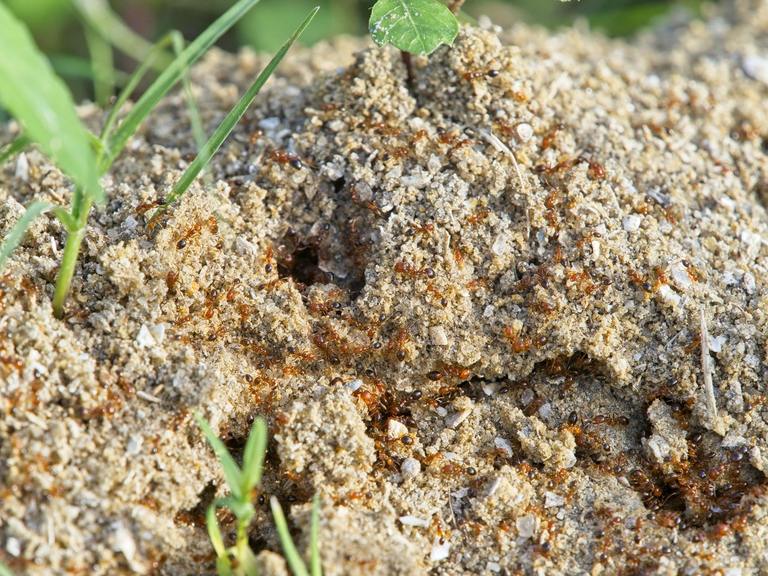Fire Ants: Fun Facts
Published: June 23, 2025

Introduction
Fire ants are more than just a backyard nuisance; they can pose serious health and safety risks to both people and pets. With their aggressive nature and painful stings, these invasive pests have become a significant concern for homeowners throughout Florida. Understanding their behavior, habits, and how to prevent infestations is the first step toward protecting your home and loved ones.
In this post, we’ll uncover some fascinating fire ant facts, discuss the dangers they present, and explore the most effective strategies for fire ant control—including why consistent, professional intervention often proves to be the most reliable long-term solution.
What Are Fire Ants?
They are a group of stinging ants from the genus Solenopsis, with the red imported fire ant (Solenopsis invicta) being the most notorious species found in the southeastern United States. Native to South America, these ants were accidentally introduced to the U.S. in the 1930s and have since become a widespread problem.
They are best recognized by their reddish-brown bodies, segmented antennae, and aggressive behavior when disturbed. Fire ants are known for building large, dome-shaped mounds that can be found in yards, parks, and even electrical equipment.
Fascinating Fire Ant Facts
Fire ants are as intriguing as they are irritating. Here are some fun and surprising facts about them:
- They Form Rafts to Survive Floods: Fire ants can link their bodies together to form floating rafts during floods. This survival tactic allows entire colonies to stay alive during natural disasters, as noted in Amdro’s fun facts on fire ants.
- A Single Colony Can Contain Over 200,000 Ants: That’s a staggering number when you consider how quickly they can spread across a property.
- They Have a Two-Pronged Attack: When disturbed, they latch on with their mandibles and sting repeatedly, injecting venom that causes a painful, burning sensation.
- They Are Aggressively Territorial: Unlike other ant species, they are extremely territorial and will defend their mounds with ferocity.
- Their Stings Can Be Dangerous: Besides pain and swelling, fire ant stings can lead to serious allergic reactions, including anaphylaxis in some individuals, according to the National Park Service.
- They Thrive in Warm, Sunny Environments: Which makes Florida an ideal place for them to take over—especially in untreated lawns and open landscapes.
- Fire Ants Can Damage Electronics: It’s not just about lawns—they have been known to infest and destroy electrical units, AC boxes, and even traffic signals.
The Hidden Dangers of Fire Ant Infestations
While the biology of fire ants is impressive, the reality of an infestation is anything but fun. They can damage crops, electrical systems, and turf, creating costly problems for property owners.
Their mounds can appear almost overnight, and once established, a colony becomes increasingly difficult to remove without coordinated effort. For those with allergies, even one unexpected encounter can become a medical emergency.

Preventative Measures to Deter Fire Ants
Taking early steps to prevent fire ant infestations is key. Here are some homeowner-friendly strategies:
- Keep Your Yard Clean: Fire ants are attracted to food sources and moisture. Remove excess vegetation, standing water, and outdoor pet food to make your property less inviting.
- Seal Entry Points: Fire ants can enter homes through the tiniest cracks and crevices. Caulking and sealing potential entryways can reduce indoor invasions.
- Regular Lawn Maintenance: Keep your grass trimmed and clear of debris. Fire ants prefer undisturbed areas to build their colonies.
- Use Baits Strategically: While over-the-counter fire ant baits can be somewhat effective, misuse can scatter colonies, making the problem worse.
These steps are a great starting point—but as most Florida residents can attest, they sometimes aren’t enough on their own.
Why Fire Ants Require Professional Pest Control
DIY methods can offer some short-term results, but fire ants have a way of outsmarting casual attempts to control them. They’re known to relocate, divide, and reestablish in new locations when threatened.
That’s where a more thorough, informed approach tends to shine. Professionals trained to spot patterns, treat the source—not just the symptoms—and apply solutions timed to seasonal behaviors usually see more consistent success.
It’s not just about removing what’s there now. It’s about knowing what’s coming—and having a plan in place when it does.
A Proactive Approach to Fire Ant Defense
The key to keeping fire ants away isn’t just reacting once they appear—it’s staying ahead of them. That’s where routine inspections and targeted treatments make a noticeable difference.
Our Standard Lawn Pest (SLP) Program is a great example of how a consistent, seasonally timed approach can shield your yard not only from fire ants but also from chinch bugs, armyworms, sod webworms, and more. It’s a method that prioritizes prevention just as much as elimination.

Don’t Let Fire Ants Take Over Your Yard
Fire ants are fascinating insects—but they’re far more fun to learn about than to live with. Their stings, their spread, and their persistence make them a challenge few homeowners want to handle alone.
And while tips and tricks may help at first, the Florida environment often calls for a more structured defense—something built to last and backed by experience.
Contact Us Today
Protect your home from Florida’s most aggressive invaders. Our team is standing by to help with fast, effective, and safe fire ant solutions. Call or visit All U Need Pest Control to schedule your service today.